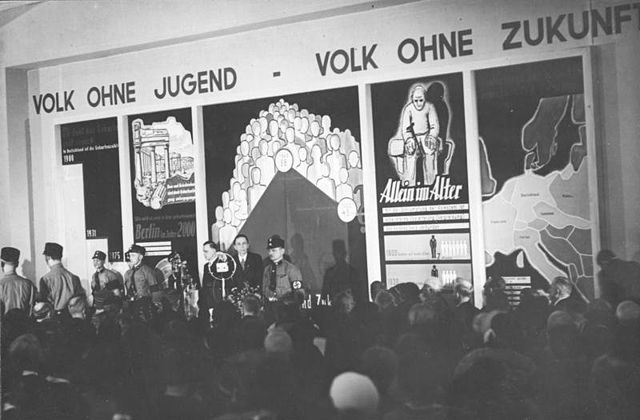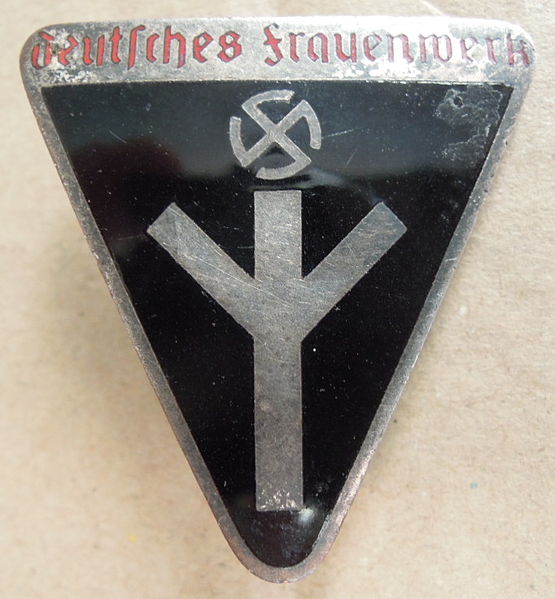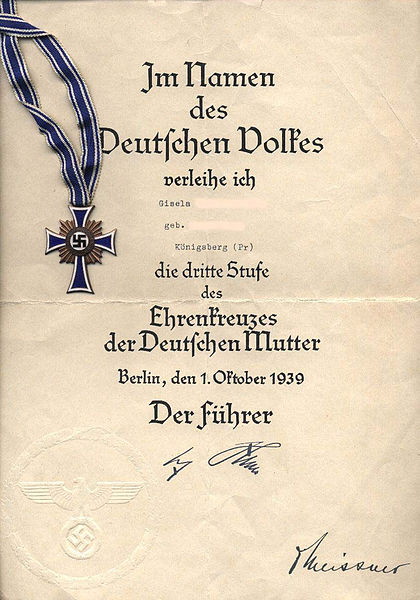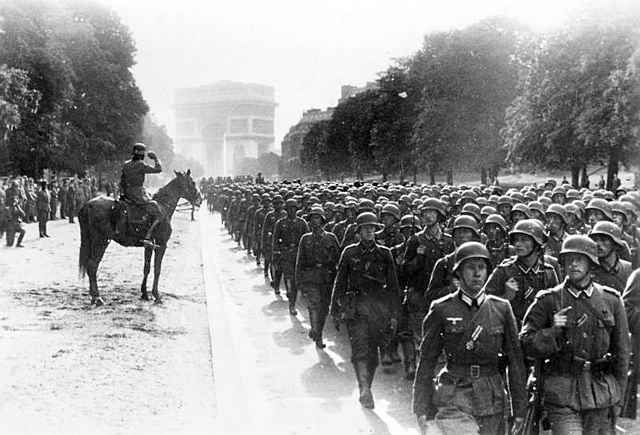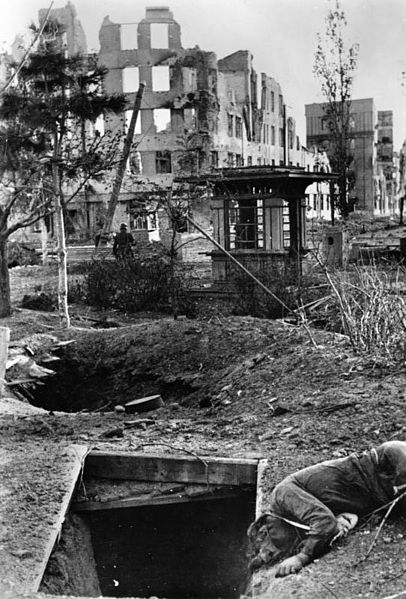Women in Nazi Germany were subject to doctrines of Nazism by the Nazi Party (NSDAP), which promoted exclusion of women from the political and academic life of Germany as well as its executive body and executive committees. On the other hand, whether through sheer numbers, lack of local organization, or both, many German women did indeed become Nazi Party members. In spite of this, the Nazi regime officially encouraged and pressured women to fill the roles of mother and wife only. Women were excluded from all other positions of responsibility, including political and academic spheres.
Opening of exposition Die Frau, Frauenleben und -wirken in Familie, Haus und Beruf (Women: the life of women, their role in the family, at home and at work) at the Kaiserdamm, March 18, 1933, with Minister of Propaganda Joseph Goebbels
Membership badge of the Deutsches Frauenwerk, a Nazi association for women founded in October 1933
Certificate of the Cross of Honour of the German Mother during World War II
German woman secretary, in 1938
Nazi Germany, officially known as the German Reich and later the Greater German Reich, is a term used to describe the German state between 1933 and 1945, when Adolf Hitler and the Nazi Party controlled the country, transforming it into a totalitarian dictatorship. The Third Reich, meaning "Third Realm" or "Third Empire", referred to the Nazi claim that Nazi Germany was the successor to the earlier Holy Roman Empire (800–1806) and German Empire (1871–1918). The Third Reich, which the Nazis referred to as the Thousand-Year Reich, ended in May 1945, after only 12 years, when the Allies defeated Germany and entered the capital, Berlin, ending World War II in Europe.
Adolf Hitler became Germany's head of state, with the title of Führer und Reichskanzler, in 1934.
Joseph Goebbels, Reich Minister of Public Enlightenment and Propaganda
German soldiers march near the Arc de Triomphe in Paris, 14 June 1940.
Death and destruction during the Battle of Stalingrad, October 1942

